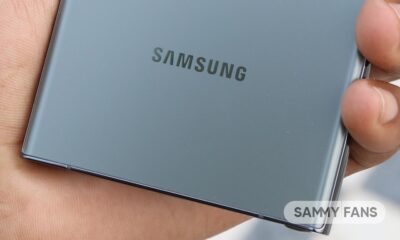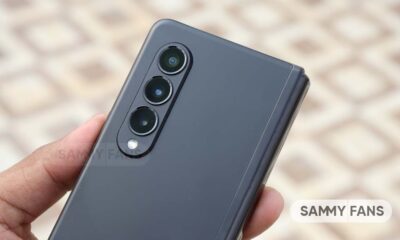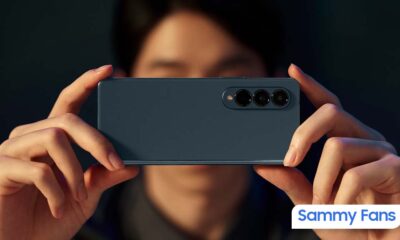News
Samsung unveils Exynos 1380 and Exynos 1330 5nm processors

Samsung has officially unveiled its two new processors – Exynos 1380 and Exynos 1330. While the Exynos 1330 is already powering the Galaxy A14 5G budget smartphone, the Exynos 1380 is made for the upcoming Galaxy A54 5G smartphone.
Both processors are based on a 5nm process and feature Cortex-A78 and Cortex-A55 CPUs, and Mali-G68 MP5 GPU. Additionally, the processors support FHD+ display, 4k 30fps video recording, and more.
Follow our socials → Google News, Telegram, Twitter, Facebook
Below you can check out the detailed specifications of both new chipsets:
Exynos 1380:
Samsung has manufactured the Exynos 1380 chipset for the Galaxy A54 smartphone coming next month. This 5nm chipset features 4x Cortex-A78 CPU cores clocked at 2.4GHz, 4x Cortex-A55 CPU cores clocked at 2.0GHz, and Mali-G68 MP5 GPU clocked at 950MHz.
The SoC is compatible with the storage of LPDDR4x, LPDDR5, UFS v2.2/UFS v3.1. It further features the advanced Triple Image Signal Processor (ISP) based on the cutting-edge technology of flagship processors.

Moreover, the chipset equips flagship-level camera features including up to 200MP image sensor support, zero shutter lag at up to 64MP, High Dynamic Range, and Electronic Image Stabilization. It also supports 4K video recording at 30 fps with EIS and HDR and real-time object recognition for improved camera performance.
In addition to this, the product is built for visual comfort. It offers a fast display refresh rate of up to 144Hz at Full HD+, enabling a seamless viewing experience and smooth scrolling.
Aside from these, the 5G modem supports mmWave and sub-6GHz networks, reaching peak download speeds of up to 3.67Gbps and upload speeds of up to 1.28Gbps. It also supports GPS, GLONASS, BeiDou, Galileo, Wi-Fi 6, Bluetooth 5.1, NFC, and USB Type-C port.
Exynos 1330:
The Exynos 1330 is made for entry-level smartphones, such as the Galaxy A14 and Galaxy M14. It is also a 5nm processor that has two Cortex-A78 CPU cores clocked at 2.4GHz, six Cortex-A55 CPU cores clocked at 2GHz, and the Mali-G68 MP2 GPU. It’s also compatible with the storage of LPDDR4x, LPDDR5, UFS v2.2/UFS v3.1.
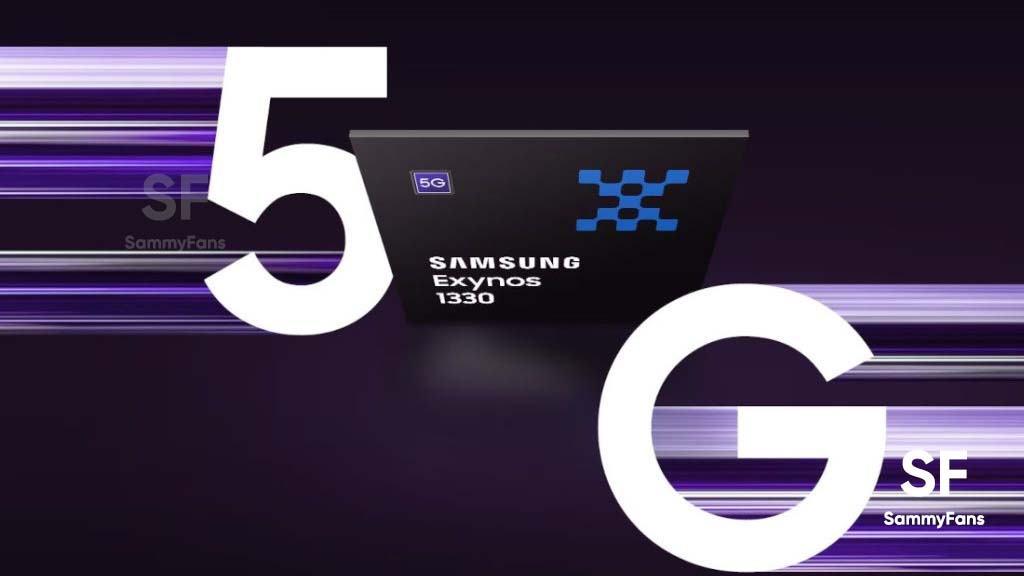
Moreover, the SoC integrates an enhanced image signal processor that supports up to 108MP for pro-grade quality. It can capture 32MP images with zero shutter lag and supports a dual 16MP + 16MP camera setup with zero shutter lag. In the meantime, the Multi Format Codec can record and play 4K videos at 30 fps in HEVC, H.264, and VP8 codecs.
In addition to these, the Exynos 1330 chipset can drive a Full HD+ 120Hz display. Its 5G modem is capable of sub-6GHz 5G networks and can reach up to 2.55Gbps peak download speeds and 1.28Gbps upload speeds of 5G networks.
Last but least, this SoC supports GPS, GLONASS, BeiDou, Galileo, Wi-Fi 5, Bluetooth 5.1, NFC, and USB Type-C port.
News
Samsung is committed to raise investment in Vietnam

Samsung reiterated its commitment to raising investment in Vietnam. The company’s Chief Financial Officer recently met the Prime Minister of the country, ensuring him towards investment plans.
According to reports, Samsung pledged to boost its annual investment in Vietnam by $1 billion. This announcement showcases the company further strengthening ties with Vietnam responsible for half of its smartphone output.
Since Vietnam plays a pivotal role in the operations of Samsung, the official expressed hopes that the country’s business environment would continue to improve. Chinh also requested Park to help local firms enter Samsung’s supply chain.
In return, the Vietnamese PM confirmed to help Samsung do business in the country. The country is reportedly considering reforms to its business environment, administrative process, and regulations important.
Park said during the meeting that Samsung Electronics has already invested $22.4 billion in Vietnam so far and incorporated a total of 309 Vietnamese companies into its supply chain, a more than 12-fold increase from 2014.
Stay up-to-date on Samsung Galaxy, One UI & Tech Stuffs by following Sammy Fans on X/Twitter. You can also discover the latest news, polls, reviews, and new features for Samsung & Google Apps, Galaxy Phones, and the One UI/Android operating system.
Do you like this post? Kindly, let us know on X/Twitter: we love hearing your feedback! If you prefer using other social platforms besides X, follow/join us on Google News, Facebook, and Telegram.
News
Samsung may launch affordable Galaxy Z Flip phone next year

Samsung is considering to launch an FE-branded Galaxy Z Flip 7 next year. The company reportedly entered a review of plans to introduce an affordable foldable phone this year. There is speculation that the rumored Galaxy Z Fold 6 FE might not debut this year.
According to TheElec, Samsung has been planning to launch the Galaxy Z Flip 7 FE next year. It may be cheaper than the regular variant in favor of a downgraded display and processor. However, Samsung’s pricing strategy would be worth seeing for its first affordable Flip phone.
This year, the South Korean tech giant is expected to launch only two foldable phones. While there are no signs of a Galaxy Z Fold 6 Ultra, the Fan Edition may also be canceled in review. Therefore, an FE lineup of foldable phones – Flip and Fold will likely join the segment in 2025.
Samsung could hold the next Galaxy Unpacked on July 10 in Paris. At the event, the company may not only launch new foldable phones but the Galaxy Watch 7 series and Galaxy Buds 3 Pro could also be launched. Well, Samsung hasn’t officially confirmed the event so far.
We are also hearing that the Exynos 2400 might not be employed in the Galaxy Z Flip 6 this year. The company has reportedly tested it but the chip has failed to offer satisfactory results. This means the Galaxy Z Flip 6 will also use Snapdragon chip internationally.
Stay up-to-date on Samsung Galaxy, One UI & Tech Stuffs by following Sammy Fans on X/Twitter. You can also discover the latest news, polls, reviews, and new features for Samsung & Google Apps, Galaxy Phones, and the One UI/Android operating system.
Do you like this post? Kindly, let us know on X/Twitter: we love hearing your feedback! If you prefer using other social platforms besides X, follow/join us on Google News, Facebook, and Telegram.
News
Samsung Galaxy S25 Ultra to ship with 16GB RAM just like the S20 and S21 Ultra!
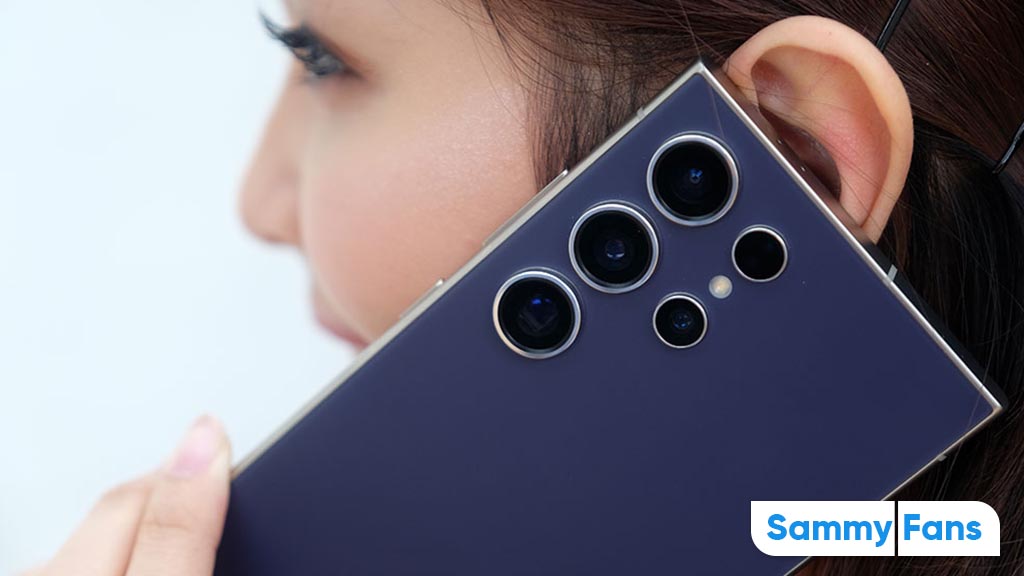
Samsung is rumored to bring 16GB RAM to the Galaxy S25 Ultra. It’s going to be a big upgrade over the recently released flagship phones by Samsung. Meanwhile, it shows the company is taking a U-turn on its decision to reduce the RAM, starting with the S22 Ultra.
Chinese vendors continue to increase RAM on their flagships. Samsung has either reduced or stuck with the same configuration. Well, a major shift seems to be loading, with Samsung Galaxy S25 Ultra being equipped with 16GB RAM, keeping the base storage unchanged.
X user Sawyer Galox claims that the Galaxy S25 Ultra could have increased RAM than the S24 Ultra. The input is based on what specifications are being tested on the prototype model. Notably, Samsung’s S20 Ultra and S21 Ultra debuted 16GB RAM variants.
Starting with the Galaxy S22 Ultra, the South Korean tech giant has reduced the RAM to 12GB. This continued with the Galaxy S23 Ultra and Galaxy S24 Ultra. As Gemini Nano v2 is also rumored to be available in the next flagships, more RAM may be required.
Galaxy S25 Ultra
• 12GB + 256GB
• 16GB + 512GB
• 16GB + 1TB• 6.9 inch
Confirmed in prototype 3 ✅️
— Sawyer Galox (@Sawyergalox) May 8, 2024
Apart from this, a new design language is expected to be introduced with the Galaxy S25 series. After following its signature design from the Galaxy S22 Ultra, the company’s next Ultra flagship would finally bring a much-anticipated design refresh.
As far as other specifications are concerned, an upgraded display with 3000 nits of peak brightness and Snapdragon 8 Gen 4 for Galaxy will likely come. The camera department may also be enhanced with the arrival of enhanced image sensors.
Stay up-to-date on Samsung Galaxy, One UI & Tech Stuffs by following Sammy Fans on X/Twitter. You can also discover the latest news, polls, reviews, and new features for Samsung & Google Apps, Galaxy Phones, and the One UI/Android operating system.
Do you like this post? Kindly, let us know on X/Twitter: we love hearing your feedback! If you prefer using other social platforms besides X, follow/join us on Google News, Facebook, and Telegram.



